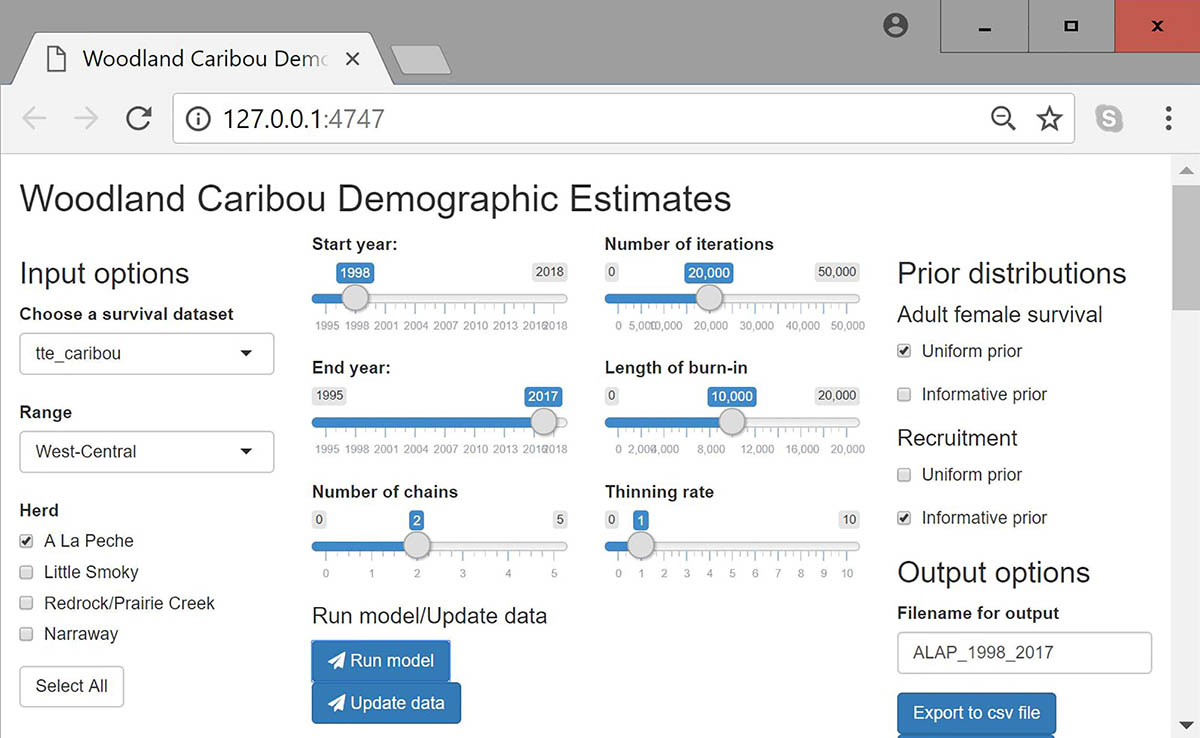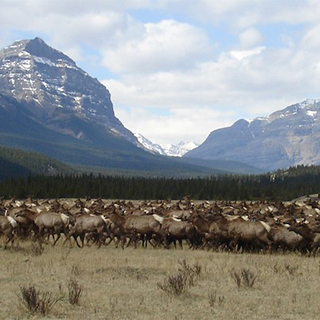Web-based application for estimating threatened woodland caribou population trends.

Eacker, D.R., Hebblewhite, M., Steenweg, R., Russell, M., Flasko, A. & Hervieux, D. (2018) Web-based application for estimating threatened woodland caribou population trends. Wildlife Society Bulletin, EarlyView Online. https://doi.org/10.1002/wsb.950
ABSTRACT
Woodland caribou (Rangifer tarandus caribou) are threatened in Canada, with population and distribution declines evident in most regions of the country. Causes of declines are linked to landscape change from forest fires and human development, notably forestry oil and gas activities, which result in caribou habitat loss and affect ecosystem food webs. The Federal Species at Risk Act requires effective protection and restoration of caribou habitat, with actions to increase caribou survival. These requirements call for effective monitoring of caribou population trends to gauge success. Many woodland caribou populations are nearly impossible to count using traditional aerial survey methods, but demographic-based monitoring approaches can be used to estimate population trends based on population modeling of vital rates from marked animals. Monitoring programs have used a well-known simple population model (the Recruitment-Mortality [R/M] equation) to estimate demographic rates for woodland caribou, but have faced challenges in managing large data streams and providing transparency in the demographic estimation process. We present a stand-alone statistical software application using open-source software to permit efficient, transparent, and replicable
demographic estimation for woodland caribou populations. We developed an easy-to-use, interactive web-based application for the R/M population model that uses a Bayesian estimation approach and provides the user flexibility in choice of prior distributions and other output features. We illustrate the web-application to the A la Peche Southern Mountain (Central Group) woodland caribou population in west-central Alberta, Canada, during 1998–2017. Our estimates of population demographics are consistent with previous research on this population and highlight the utility of the application in assessing caribou population responses to species recovery actions. We provide example data, computer code, the web-based application package, and a user manual to guide installation and use. We also review underlying assumptions and challenges of population monitoring in this case study. We expect our software will contribute to efficient monitoring of woodland caribou and help in the assessment of recovery actions for this species.
SUPPORTING INFORMATION
Additional supporting information may be found in the online version of this article at the publisher’s website. This includes
Appendix A: Shiny Application for R, including all R code;
Appendix B: User manual for caribou app.
Appendix C: example user report from the Shiny Application in .html format;
Appendix D: data input files for adult female survival for the A la Peche caribou population, 1998–2017;
Appendix E: data input files for recruitment for the A la Peche caribou population, 1998–2017;
Appendix F: a single, self-contained .zip compressed file consisting of all of the above plus JAGS model code for adult female survival and recruitment using uninformative and informative priors, an R markdown report generation code and associated files;
Appendix G: Table S1 comparing estimates for adult female survival, recruitment probability, and population growth rate (lambda) for the A la Peche caribou population.
